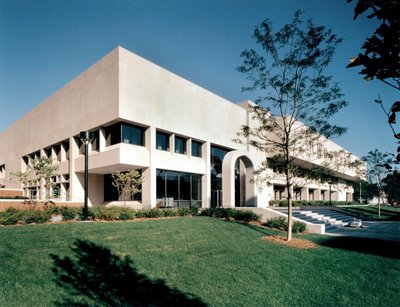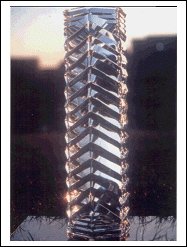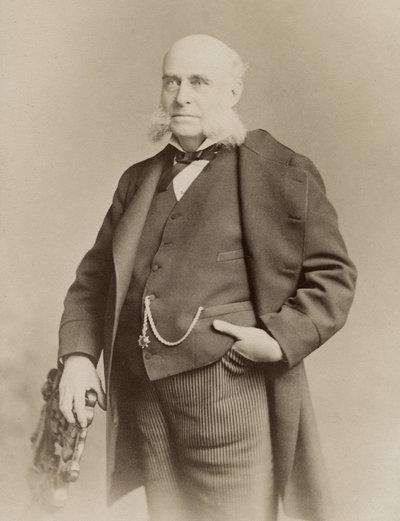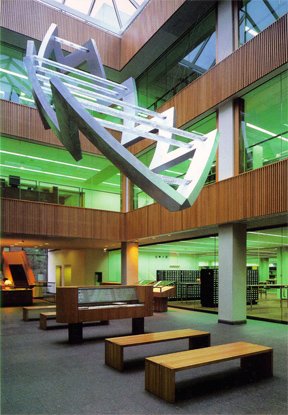History of the John Crerar Library
History of the Library
Motto: Non est mortuus qui scientiam vivificavit ("He has not died who has given life to knowledge")
2014 exhibit celebrating the history of Crerar Library : "A Library for All Time"
The John Crerar Library is home to collections in the biological, medical and physical sciences as well as collections in general science and the philosophy and history of science, medicine, and technology. Opened in 1984, the library resulted from the merger of the John Crerar Library, a library established in Chicago in 1894 with the University of Chicago. The mission of the John Crerar Library is to serve the educational and research aims of the University of Chicago while continuing to honor the spirit of John Crerar by welcoming visitors to use the research collections at the library. Please contact Science Reference Services for more information.
Merger agreement: April 13, 1981
Groundbreaking ceremony: October 4, 1982
Closing of Crerar services at 35 West 33rd Street: July 31, 1984
Opening day: September 10, 1984
Dedication: November 1, 1984

Building Information
The John Crerar Library is located at 5730 S. Ellis Avenue, Chicago, IL. The building was designed by The Stubbins Associates of Cambridge, Massachusetts and Loebl, Schlossman, and Hackl of Chicago (associate architects), and construction was managed by Schal Associations of Chicago. The library bookstacks, circulation desk, reading room and group study rooms are housed on the lower level and accessible from the west staircase on the first floor. Most of the bookstacks are compact shelving. A library training room is also on the lower level and accessible from the east staircase. Librarian offices and the Kathleen A. Zar Room Data Visualization Lab and GIS Hub are located on the north side of the first floor. The Computer Science Department, the Media, Arts, Data and Design Center and the Physical Science Division Graphic Arts Center also reside in the building.
The building is a four-story structure, rectangular in shape. The exterior of the building is horizontal in organization and mass, but the details of the design reflect the vertical character of the original gothic campus. The entire facade is limestone (supplied by Harding & Cogswell of Bedford, Indiana) and recalls the fenestration of the older buildings on campus. The upper floor cantilevers eleven feet beyond the lower floors. Crerar's motto, the University's motto, and the name of the building were carved in stone by Galloy and Van Etten, Inc., of Chicago.
The approximate east-west dimension of the building is 135 feet and the north-south dimension is 294 feet. The building contains 160,836 gross square feet of floor space. Granite floors in the atrium and main staircase areas are from Cold Springs Granite Company of Cold Springs, Minnesota. The exterior granite stairs are from the Texas Granite Corporation of Marble Falls, Texas. In the book stacks, timed fluorescent lights are at right angles to shelves to allow changes in stack spacing. All lights were manufactured by Garcy Lighting Company of Chicago.
Funded by The John Crerar Library, foundations, corporations, individuals, and University, the original building cost was about $22 million, including all fees, equipment, furniture, landscaping, site preparation, moving and other costs. A roster of principal donors is permanently located in the atrium of the Library.
The building includes a skylight in the central three-story atrium to introduce natural light to the building while giving the library patron a sense of the library's physical plan. Suspended in the atrium is Crystara, a sculpture of aluminum and Waterford crystal by Chicago artist John David Mooney.

Crystara
"Crystara" is the name chosen for the sculpture that The University of Chicago commissioned artist John David Mooney to create in 1984 for the three-story atrium of The John Crerar Library.
The 30 x 12-foot sculpture, suspended from the atrium's skylight, is a curvilinear creation that marries the modern properties of aluminum with the centuries-old craft of handmade Waterford crystal.
Its stair-stepped frame of hand-rubbed aluminum was fabricated by the Watson Steel Center of Muncie, Indiana. The frame supports eight hexagonal crystal crossbars, 20 inches in circumference, made from 57 separate pieces that Mooney designed. They were mouth-blown and hand-cut under his supervision by a team of master craftsmen at the Waterford glassworks in southeastern Ireland.
Facets are deeply cut into the crystal in three different patterns. They create a constantly changing prismatic effect by refracting the natural light flooding into the atrium by day. "Crystara" has no internal lighting, yet it is the focal point of an intricate balance of light and shadow.
Mooney is a Chicago artist. In addition to permanent works, he has created monumental temporary works in Indianapolis, Los Angeles, and Zagreb, Croatia. He considers "Crystara" one of his most complex and ambitious projects.

Who was John Crerar?
"He was remarkable for the way in which his character combined force with geniality. ...His conspicuous personal attractiveness, his fine and wholesome example as a gentleman, his constant, varied, most generous and yet most discriminated charities, his conspicuous business conservatism and judgment, so justified by success, and the steadfastness in his religious life, made him a man of rare value and usefulness to all circles with whom he closely associated, and to the large circle of the great city." Chicago Dental Society Official Bulletin. v. 1, no. 27 (1921): p.6.
Born on March 8, 1827, in New York City of Scottish immigrants, John Crerar went to work in 1856 for Morris K. Jesup, owner of a railway supply business. Crerar came to Chicago in 1862 as Jesup's partner to inspect one of their branch offices, a large manufacturing and distributing plant for railroad supplies founded by J. McGregor Adams. So impressed with the future possibilities of Adams' business and Chicago itself Crerar purchased Jesup's interest, becoming president of the new firm Crerar, Adams & Company. During this period Chicago was becoming a great railway center and a chief distribution point for railroad supplies. Financial success was immediate and by 1868 Crerar leading businessman financing new railways and involving himself in companies like the Chicago and Alton Railroad Company, the Chicago & Joliet Railroad, the Illinois Trust and Savings Bank, and the London, Liverpool and Globe Insurance Company. He served as director of all these organizations and president of some at one time or another. Crerar was one of the incorporators of the Pullman Palace Car Company and served on its' Board of Directors throughout his life.
Crerar became one of Chicago's leading citizens as well lending his influence and resources to causes he considered beneficial to the development of Chicago. Following the 1871 fire, as Director of the Chicago Relief and Aid Society, he was selected by the New York Chamber of Commerce to distribute the funds sent by them. Active in the Commercial Club, which founded the Chicago Manual Training School, later to become part of the University of Chicago High School, Crerar also belonged to the Chicago Literary Club, the Chicago Historical Society, the YMCA, the American Sunday School Union, the Chicago Orphan Asylum, and the Presbyterian Hospital, holding positions of director or president in each.
A lifelong interest in books and learning, Crerar was an active member and former president of the New York Mercantile Library, and instrumental in bringing William Makepeace Thackeray to America on his famous lecture tour of 1852.
Known for leading a quiet personal life, Crerar never married and made his residence at the Grand Pacific Hotel. He was a fervent ecclesiastic and active protagonist of orthodoxy. In 1886 while still in good health, Crerar wrote his will bequeathing large sums of money to friends, cousins on his mother's side, philanthropies, and for the erection of a statue of Abraham Lincoln. All monies left over were to be used for the founding of a free public library. Although Crerar did not specify the scope of the library, it "must not contain nastiness and immorality", such as "dirty French novels and all skeptical trash and works of questionable moral tone", a reflection of the character he had developed throughout his life.
John Crerar died in Chicago on October 19, 1889 and was buried in Brooklyn next to his mother. The Chicago Central Music Hall could not accommodate all who wished to attend his memorial service.
Further reading
Aiken, Jane. “The John Crerar Library.” Encyclopedia of Chicago.
Andrews, Clement Walker. The John Crerar Library: A Free Public Reference Library of Scientific Literature. 1894-1905. (Reprint from Libraries of Chicago) Chicago, 1905.
Bay, J. Christian. The John Crerar Library, 1895-1944: An Historical Report Prepared under the Authority of the Board of Directors by the Librarian. Chicago: John Crerar Library, 1945.
Carnahan, Paul A. A Guide to the Historical Records of the John Crerar Library, 1828–1984. Edited by Richard L. Popp. 1991.
Great Is the Gift that Bringeth Knowledge: Highlights fromthe History of the John Crerar Library. (Exhibition catalogue) Chicago: John Crerar Foundation; University of Chicago Library, 1989.
Swanson P. A. (1986) "The John Crerar Library of the University of Chicago." Science & Technology Libraries 7, 31-43.
Swanson, Patricia A. "The politics of library buildings: a case study of the John Crerar Library." IATUL Quarterly 1990;4:115-121.
(1985) "John Crerar/Univ.of Chicago in historic merger." Library Journal 110, 22.
The John Crerar Library Annual Reports
Annual reports 1895-1925 (from Illinois Harvest digital collection)
